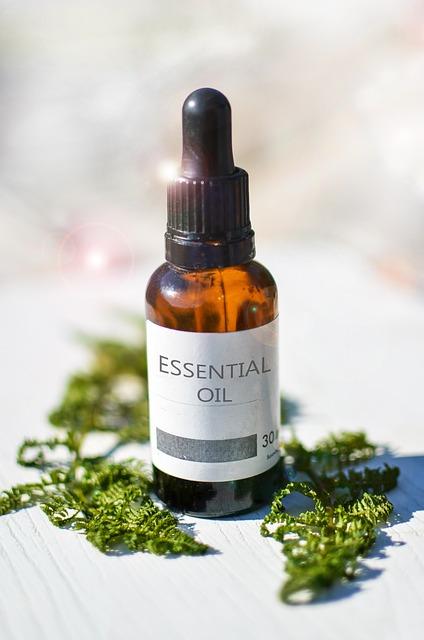Table of Contents
- – Essential Tips for Eating Real Food While Curbing Your Expenses
- – Budget-Friendly Meal Planning for Fresh and Wholesome Ingredients
- – Smart Shopping Strategies to Stretch Your Food Dollar Further
- – Delicious and Nutritious Recipes That Wont Break the Bank
- – Creative Leftovers Ideas to Minimize Waste and Maximize Value
- Q&A
- In Summary


– Essential Tips for Eating Real Food While Curbing Your Expenses
Eating real food doesn’t have to break the bank. One of the best strategies is to plan your meals for the week. When you know what you’re going to eat, you can avoid impulse buys at the grocery store. Start by making a comprehensive shopping list based on your weekly menu. This list should focus on whole ingredients that are versatile and affordable. Foods like rice, beans, and seasonal vegetables can be the backbone of your meals, allowing you to create a variety of dishes without spending excessively.
Another useful tip is to embrace batch cooking. Cooking large portions allows you to save time and money while reducing food waste. For example, prepare a sizable pot of chili or a casserole, and then divide it into individual portions to freeze for later. By doing this, not only do you ensure that you have quick meals ready when you’re busy, but it also keeps you from reaching for less healthy convenience foods. Invest in some durable containers to make storage easy and efficient.
consider shopping in-season or at local farmers’ markets. Produce that’s in season is often fresher and more affordable. To help visualize this, here’s a simple table that outlines seasonal produce and approximate price ranges:
| Season | Fruits/Vegetables | Approx. Price Range |
|---|---|---|
| Spring | Asparagus, Spinach, Strawberries | $1 – $3 per lb |
| Summer | Tomatoes, Peppers, Zucchini | $1 – $2 per lb |
| Fall | Squash, Apples, Sweet Potatoes | $1 – $2 per lb |
| Winter | Cabbage, Carrots, Citrus Fruits | $1 – $3 per lb |
By implementing these strategies, you can enjoy nutritious, real food options without overstretching your budget. The key lies in planning, being resourceful, and making the most of what’s available seasonally, ensuring that you not only nourish your body but also keep your finances in check.


– Budget-Friendly Meal Planning for Fresh and Wholesome Ingredients
Meal planning doesn’t have to be an expensive endeavor. With a little creativity and strategic thinking, you can incorporate fresh and wholesome ingredients into your weekly menu without breaking the bank. Start by making a weekly meal plan. This helps you visualize your meals, reduces impulse buys, and ensures you only purchase what you need. Consider selecting seasonal fruits and vegetables, as they tend to be more affordable and flavorful. Stock up on staples like beans, lentils, and whole grains, which are both nutrient-dense and budget-friendly.
When you’re shopping, prioritize the perimeter of the grocery store where fresh produce, lean proteins, and dairy are usually found. This can often lead to healthier choices that fit within your budget. Additionally, plan to buy in bulk whenever possible; not only do bulk items usually come at a lower price, but they can also reduce packaging waste. Here’s a useful table to consider when evaluating common bulk items:
| Item | Price per pound (bulk) | Price per pound (store-bought) |
|---|---|---|
| Brown Rice | $0.90 | $1.20 |
| Kidney Beans | $1.00 | $1.50 |
| Oats | $0.70 | $1.10 |
Consider incorporating cooking techniques that stretch your meals further. Batch cooking or making soups, stews, and casseroles can efficiently utilize fresh ingredients without waste. Leftovers can be repurposed into new dishes, ensuring variety while keeping the grocery budget low. Utilize herbs and spices to enhance flavor—these inexpensive additions can elevate even the simplest meals, making them satisfying and delicious. By being mindful of your purchases and planning wisely, you can maintain a nourishing diet that aligns with your budget goals.


– Smart Shopping Strategies to Stretch Your Food Dollar Further
To maximize your food budget while maintaining a focus on real, wholesome ingredients, consider these savvy shopping tactics. Start by planning your meals around the items that are currently on sale. Many grocery stores have weekly promotions, so take advantage of these opportunities by creating a menu that incorporates discounted produce, proteins, and grains. Making a shopping list based on this plan can help you avoid impulse buys and ensure that every dollar spent contributes to your family’s nutrition.
Another effective strategy is to purchase in-season fruits and vegetables. Not only are they typically more affordable, but they also taste better and are often more nutritious. Incorporate these seasonal items into your meals to keep your diet varied and interesting. Additionally, consider visiting local farmers’ markets, as they can provide fresh produce at lower prices without the markup that often accompanies grocery store items. Here’s a quick guide to help you identify some commonly in-season produce:
| Season | Fruits | Vegetables |
|---|---|---|
| Winter | Oranges, Apples | Carrots, Kale |
| Spring | Strawberries, Rhubarb | Asparagus, Spinach |
| Summer | Peaches, Berries | Tomatoes, Zucchini |
| Fall | Pears, Pumpkins | Brussels Sprouts, Broccoli |
Don’t overlook the power of bulk buying as a means to enhance your food purchasing strategy. Items like grains, legumes, nuts, and seeds can often be found at a lower cost when purchased in larger quantities. This not only reduces the unit price but also minimizes the frequency of shopping trips, saving you time and money in the long run. When storing these items, ensure you have proper containers to maintain their freshness, and take care to label them for easy access. By implementing these approaches, you can stretch your food dollar significantly while still enjoying diverse and satisfying meals.


– Delicious and Nutritious Recipes That Wont Break the Bank
Delicious and Nutritious Recipes That Won’t Break the Bank
Eating healthy doesn’t have to come at a premium. With a bit of creativity and some essential ingredients, you can whip up meals that are both satisfying and economical. Consider starting with a vegetable stir-fry—it’s a versatile dish that allows you to use seasonal vegetables on sale. For protein, add tofu or eggs, which are cost-effective and nutrient-dense. Toss everything in a light soy sauce or homemade teriyaki, and you have a feast that caters to both taste and budget.
Another gem for your meal prep is a hearty lentil soup. Lentils are not only affordable but also packed with protein and fiber, making them an ideal staple for a healthy diet. Simply sauté some onions, carrots, and celery in a pot, add your lentils along with vegetable broth, and let it simmer. Spice it up with your favorite herbs like thyme or parsley for a comforting and nourishing meal that stretches over several days without stretching your wallet.
Don’t forget about sheet pan meals—a win-win for both health and convenience. Choose a time when root vegetables like potatoes, carrots, and Brussels sprouts are at their best prices. Pair them with a protein source such as chicken thighs or seasoned chickpeas for a complete one-pan dinner. The best part? Clean-up is minimal, which is perfect for busy weeknights! With just a sprinkle of olive oil, salt, and pepper, you can create a colorful and filling dish that’s as good for your bank account as it is for your health.


– Creative Leftovers Ideas to Minimize Waste and Maximize Value
Transforming leftovers into exciting new meals is an excellent way to save money while minimizing waste. Start by exploring the vast culinary possibilities that each leftover ingredient can offer. For instance, a handful of steamed vegetables can become a vibrant frittata or an aromatic stir-fry, breathing new life into yesterday’s meals. Similarly, roasted meats can be diced and tossed into salads or wraps, creating hearty and nutritious options.
Consider batch cooking grains, such as quinoa or rice, as they can be incredibly versatile bases for various dishes. Here are a few creative ideas:
- Grain Bowls: Layer leftover grains with fresh vegetables, proteins, and a zesty dressing.
- Stuffed Peppers: Use spare grains mixed with beans and spices to fill bell peppers, then bake them for a satisfying dish.
- Cold Salads: Combine cold grains with citrus, nuts, and leftover proteins for a refreshing salad.
Emphasizing seasons and flavors can also elevate your leftover meals. A handy approach is to plan your week’s meals around ingredients that can multitask. To illustrate this concept, consider the table below, which highlights some common ingredients along with several creative wrap-up ideas:
| Ingredient | Leftover Idea |
|---|---|
| Chicken | Chicken Tacos or Stir-fry |
| Mashed Potatoes | Potato Cakes or Shepherd’s Pie |
| Bread | Croutons or Bread Pudding |
By thinking creatively about how to use up these staples, you’ll not only minimize waste but also expand your culinary repertoire. With a bit of imagination, those seemingly mundane leftovers can turn into delightful meals that make the most of your budget while delighting your taste buds!
Q&A
Q&A: 100 Days of Real Food on a BudgetQ: What is the “100 Days of Real Food on a Budget” challenge? A: The “100 Days of Real Food on a Budget” challenge encourages individuals and families to commit to eating minimally processed, whole foods for 100 days, all while staying within a budget. It’s about making healthy eating accessible and highlights how nutritious meals can be made without breaking the bank.Q: Why is eating real food important? A: Real food—whole or minimally processed food—provides essential nutrients that our bodies need to thrive. By eating real food, we are reducing our intake of excess sugars, unhealthy fats, and artificial additives, which can contribute to various health issues. This challenge also promotes mindfulness about the food we consume.Q: How can I begin this challenge without overspending? A: Start by creating a meal plan for the week that incorporates seasonal fruits and vegetables, grains, legumes, and proteins. Shopping with a list can help you avoid impulse buys. Additionally, buying in bulk, shopping sales, and choosing store brands can significantly reduce costs.Q: What are some tips for meal prepping on a budget? A:- Choose versatile ingredients: Ingredients like rice, beans, and seasonal vegetables can be used in multiple recipes.
- Cook in batches: Prepare large quantities of dishes that freeze well, such as soups and stews, so you can enjoy them later.
- Involve the family: Make meal prep a fun family activity! This not only saves time but also teaches everyone about cooking and budgeting.
- Vegetable stir-fry with brown rice and tofu
- Chili made with canned beans and seasonal vegetables
- Overnight oats for breakfast, topped with seasonal fruit
- Lentil soup which is hearty and affordable




0 Comments